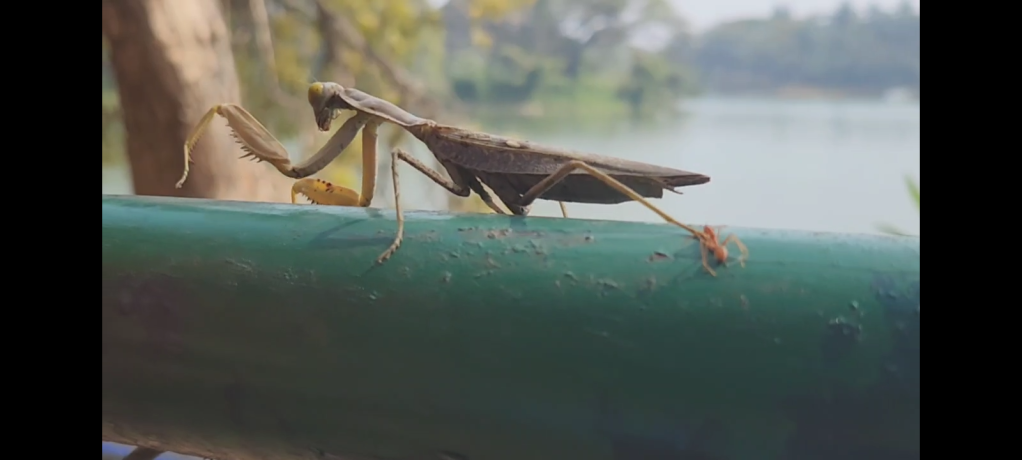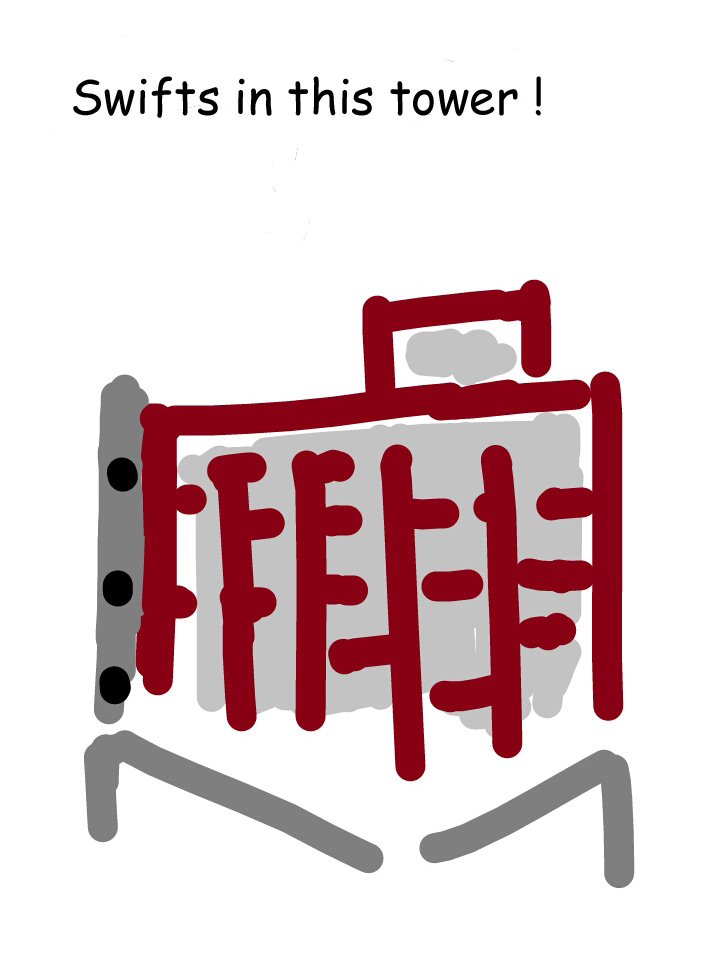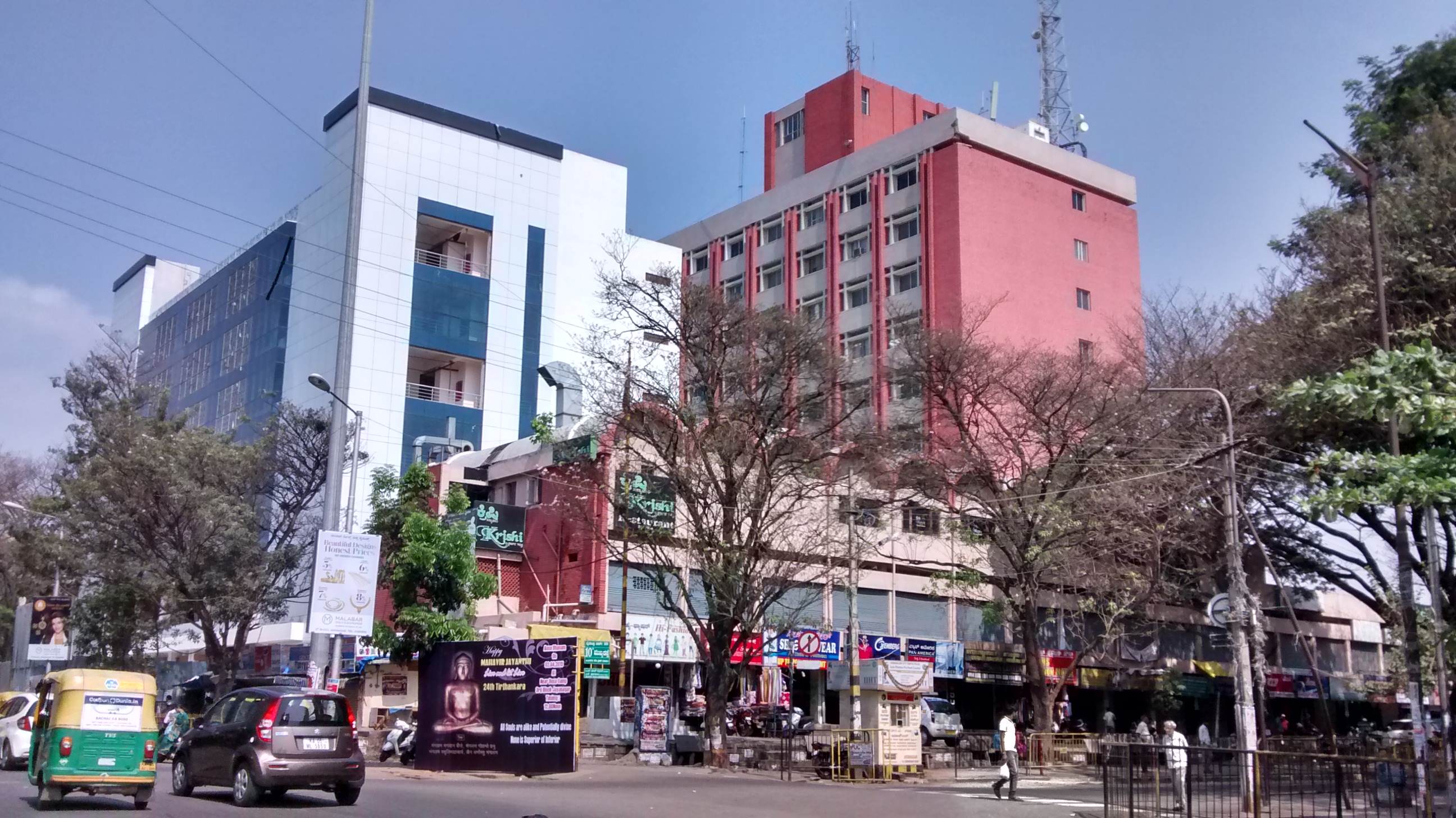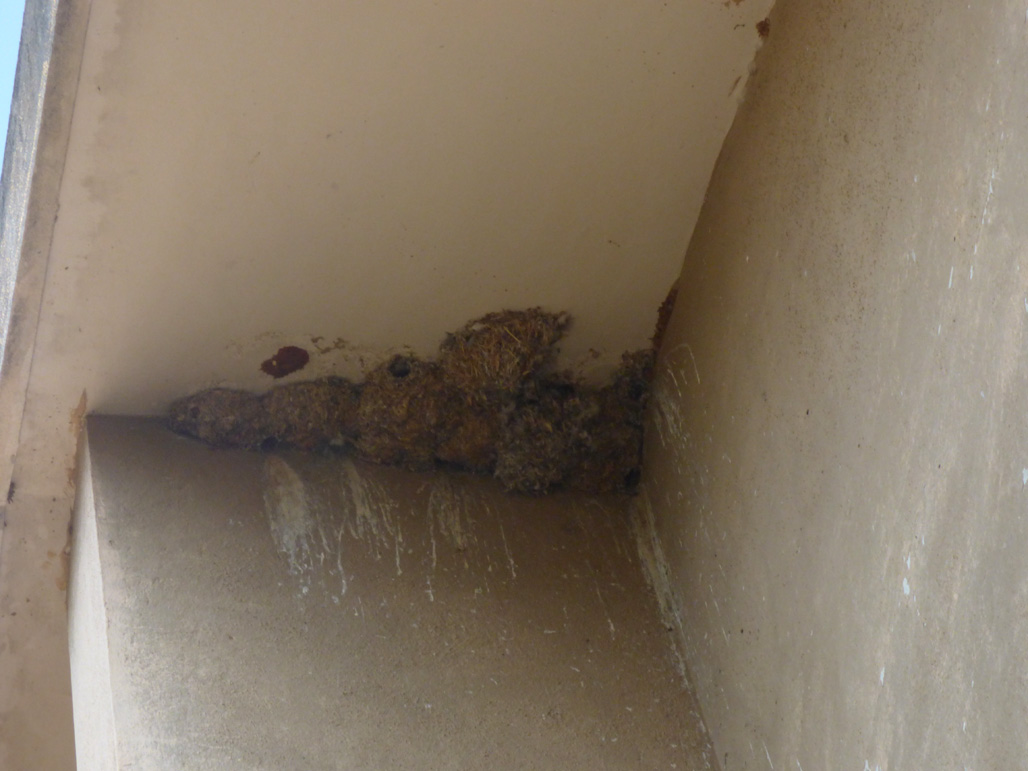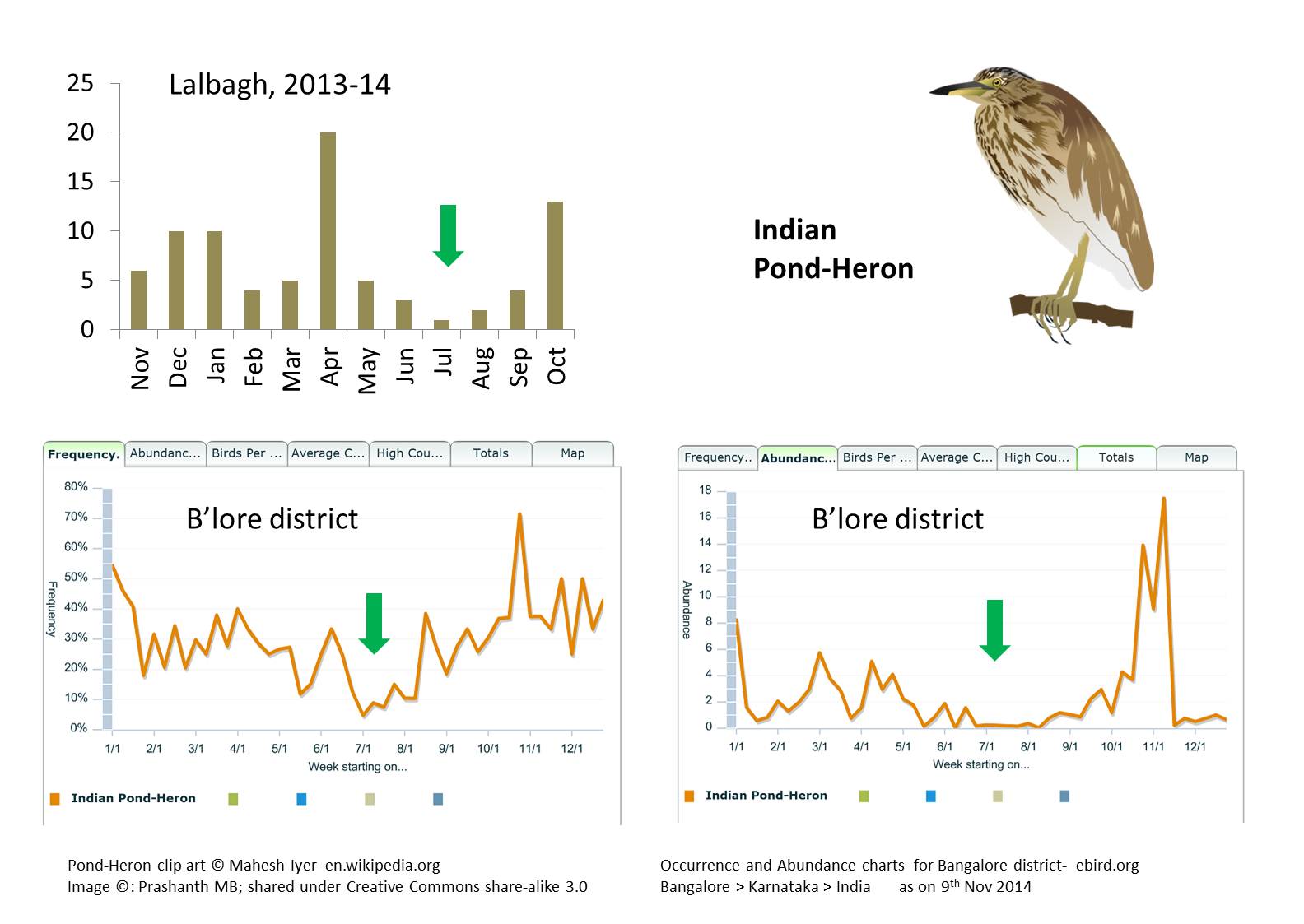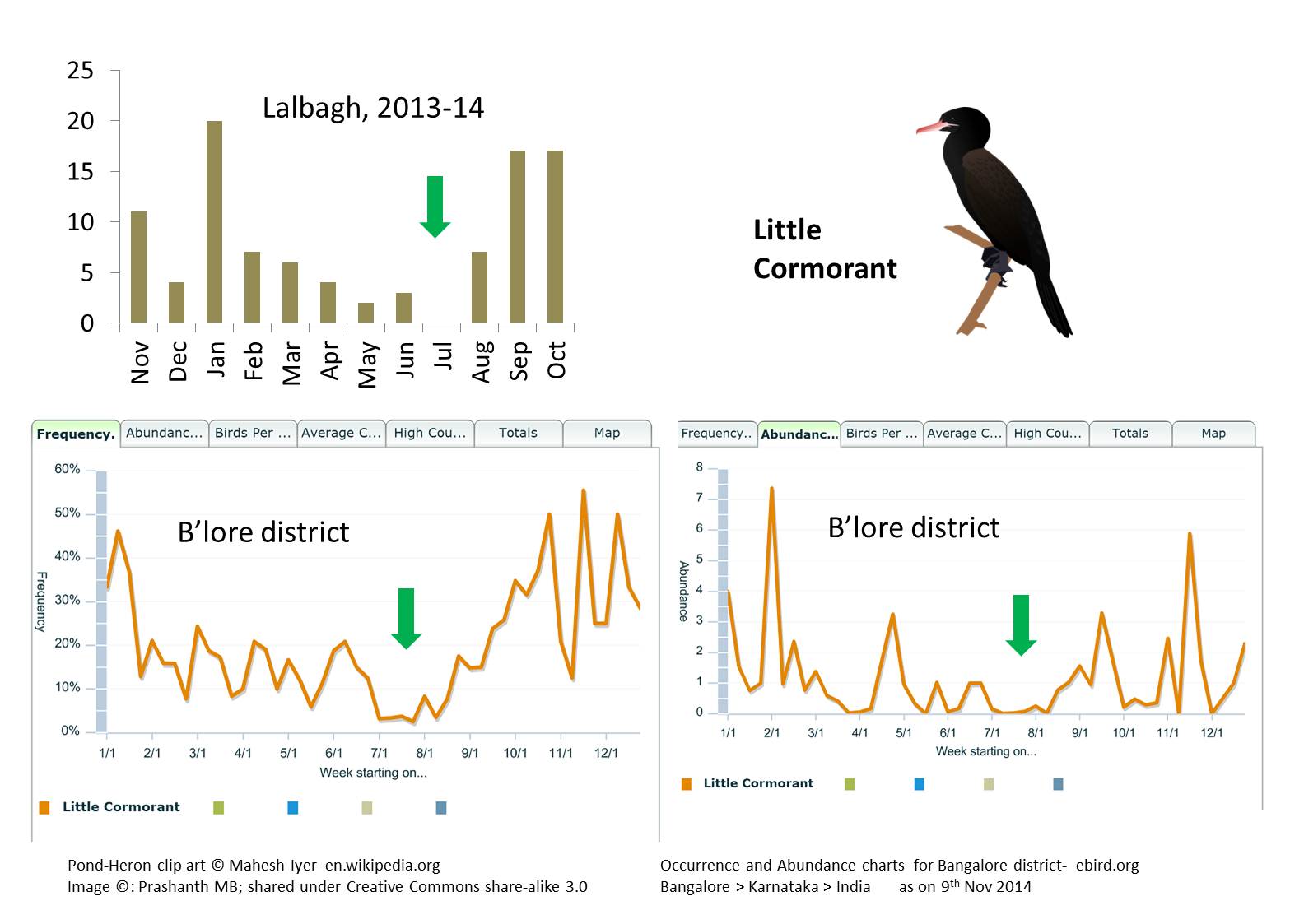Waterbirds in Lalbagh: seasoning the seasons
Prashanth, Kishan and Srinivasa
===================================================
Sections:
In brief
Introduction
Sourcing reports
Observations
Are these seasonal changes, dispersion due to nesting, or just sporadic movements?
Acknowledgements
References
======================================================================================
In brief
Lalbagh is visited every month for informal outings by birdwatchers which gives them a chance to record the bird diversity during each time of the month. Here, we present the seasonal and regular presence of waterbirds in the Lalbagh tanks that resulted from an activity during the outings. About eight species were sighted on all months of the year, and another species were present seasonally. The absence or the fluctuations in numbers of certain species coincided with their known breeding seasons. Abundance of waterbirds did not exceed 150 individuals from all the twelve monthly visits.
Introduction: In what is fairly a customary practice, unwinding after a morning’s birdwatching session usually happens by the bridge at Lalbagh. Not as a matter of preference of sorts, but more so because of their visibility even after the sun is up, the waterbirds are met at the fag end of the session, while the ones that hop around on trees and bushes are met much earlier in the morning. Cormorants, the Rails and the Herons are sure to be met with, and the popular Pelicans are met now and then depending on the seasons. In a sheer challenge to what the seasons offer to the waterbirds (migratory and wintering season), the wintering congregations or sightings have been hard to come by during the last eight years. The place unfortunately has also been bereft of a diverse assemblage of birds occurring either over a short or long span of time. Many reasons could be driving it (blogpost, Sep 2013; Swamy NR, 1990) but if we did stop down to observe the more commonly occurring birds, what do they have to tell us? In what appeared like a seasonal arrival of the Pelicans at Lalbagh, the peaking of their flocks was also to be seen at other location is the city (blogpost, Nov 2013). So,
Do we attribute the sudden disappearance of a species or a flock to disturbances alone in Lalbagh, or is it the turn of the season that drives their absence? In spite of the harsh conditions that are brought upon due to landscaping, disturbance, water level regulation etc is there a seasonal pattern to their occurrence?
Are such seasonal changes only relevant to what are called migratory species and not so for the resident species?
While trying to summarize the reports of one full year’s visit to Lalbagh, this blog post provides the waterbird counts, their monthly (and seasonal presence) at the tank and possible movements that may be driven by breeding or fluctuations in water level.
Sourcing reports: Waterbirds have been documented from the main tank as well as the adjoining marsh. Species and their total counts were obtained on each visit totaling to twelve monthly visits. The main water tank offers good visibility and is covered from multiple points along the periphery in a short span of time (less than half an hour). Most reports come from the second sunday outings that are held between 7:30-9:30 am and three other reports for missing months, were also from the mid-week of the month, and, from the same time of the day. The same set of observers (Kishan SB, Prashanth MB, TS Srinivasa et al) have reported on eleven months out of the twelve months. The result was from a pre-planned activity, and, not an accumulation of sporadic reports that may lead to bias in terms of missing certain pockets in the tank area while surveying. Most reports were posted on bngbirds@yahoogroups.com (Kishan SB, Archives bngbirds).
Table1: Monthly occurrence and abundance of each species (click on the image to enlarge)
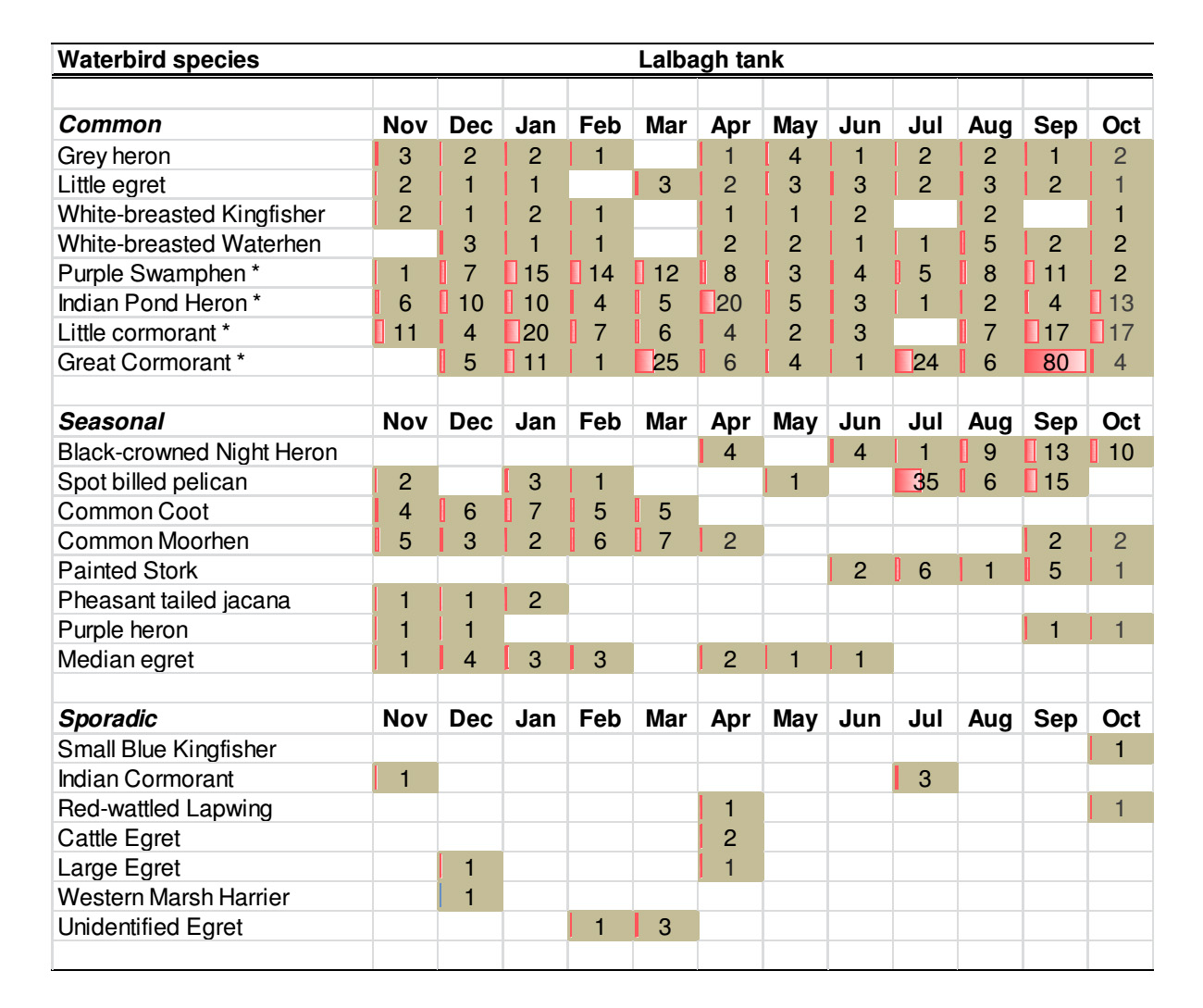
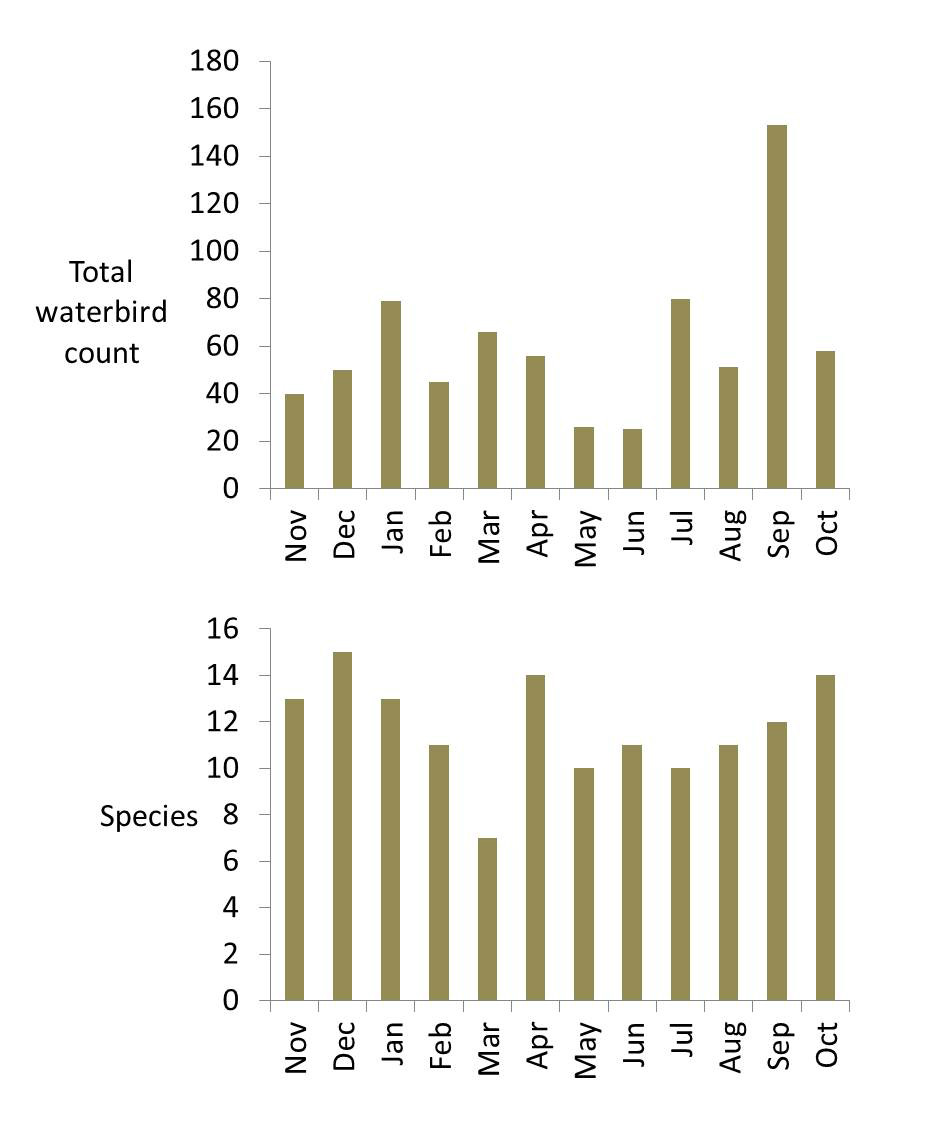
Fig 1a (top-right) & 1b (bottom-right): Total waterbird count and species count from monthly observations
The total waterbird count is observed to have peaked during the months of September, when flocks of Great Cormorants and Pelicans have been recorded.
Species count on the other hand shows fluctuations with peaking during winter and a decrease during summer. At least ten waterbird species have been observed during the entire cycle, except in the month of March.
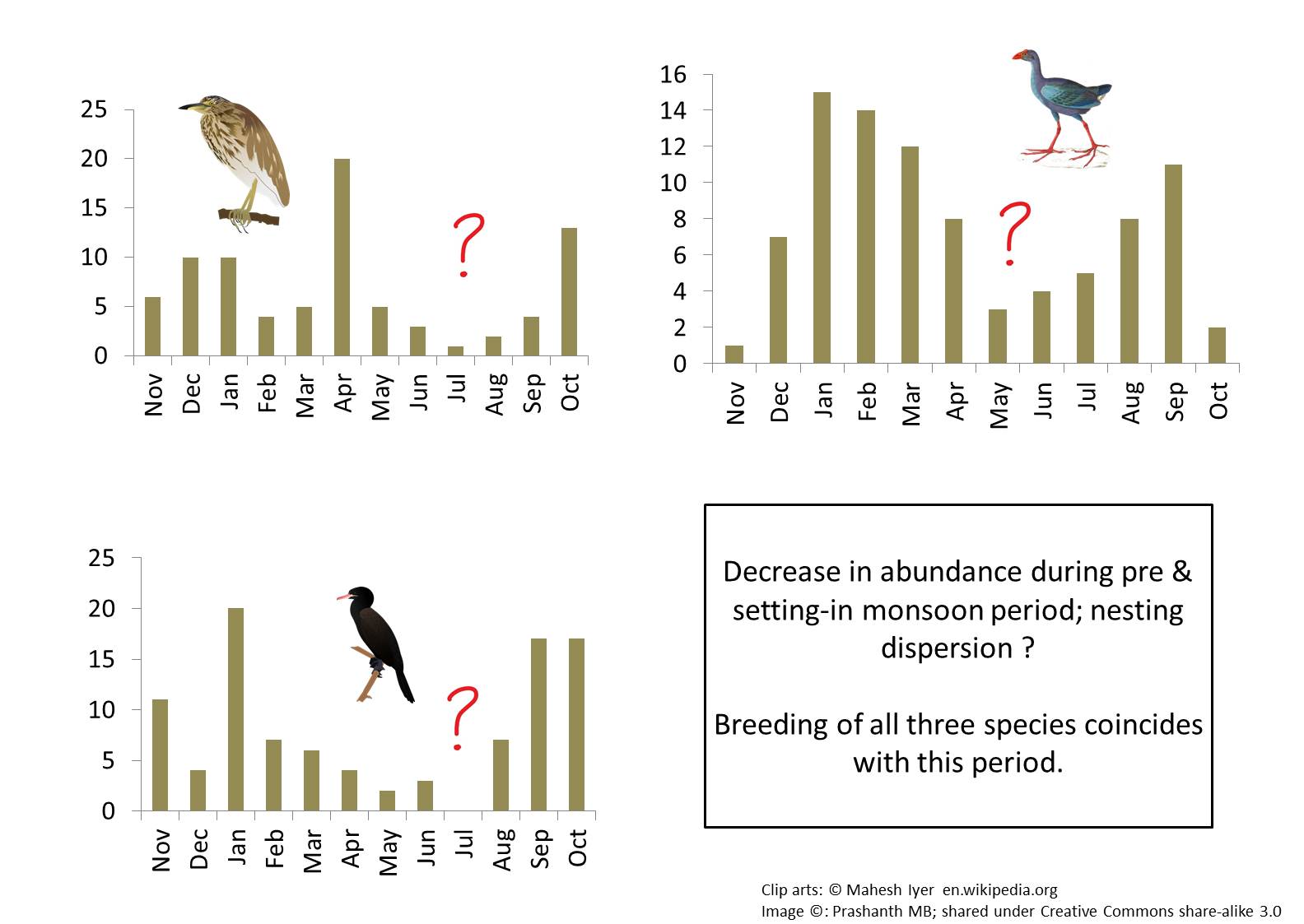
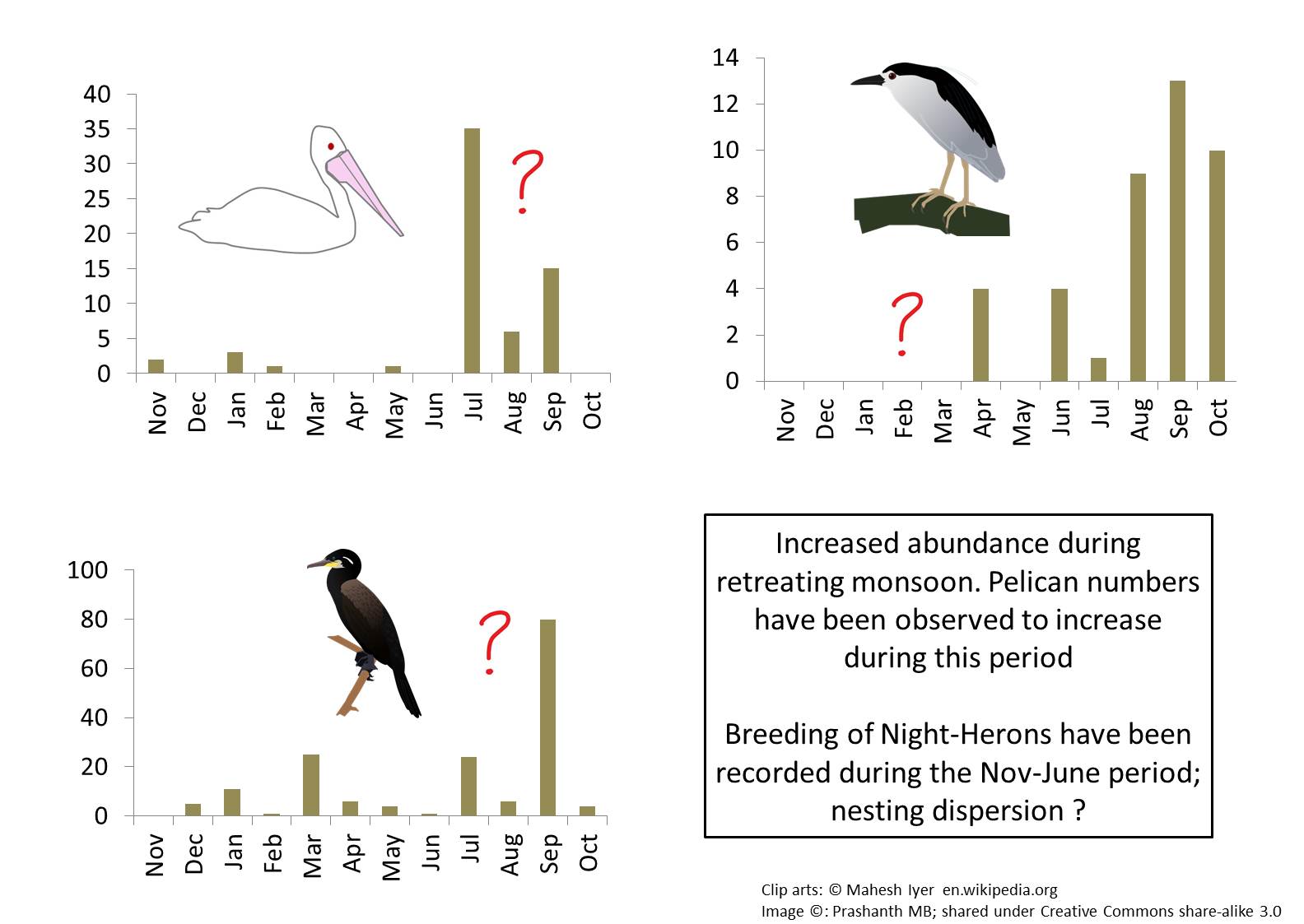
Fig 2a (top) & 2b (below): Species counts showing fluctuations during the early monsoon (decrease) and late monsoon period (increase). Click on the image to enlarge.
Pre-monsoon and Setting-in monsoon (fig 2a): The abundance of a few waterbird species such as Purple Moorhen, Pond-Heron and Little Cormorant show decrease in abundance during this period. This period coincides with the known and observed breeding periods of Purple Moorhen (May, also observed in Lalbagh), Pond-Heron and Little Cormorants (Monsoons, June- September).
Late-monsoon and early-winter (fig2b): The Large Cormorants and Spot-billed Pelicans have been observed in bigger flocks as the monsoon advanced. The occurrence of Night-Herons is seasonal and they have not occurred during the entire year.
Are these seasonal changes, dispersion due to nesting, or just sporadic movements?
It is also important to note that while the percentage change in many of the species count is more than fifty percent of their recorded numbers, these flocks have been occurring at very low numbers (maximum 80 individuals of any species). Detectability of certain cryptic species that might feed around reeds and emergent vegetation (Pond-Heron and Purple Moorhen) also need to be considered.
However, from other sites in the surrounding area (Yediur), the following seasonal occurrence or dispersion due to probable nesting activity are consistent with these observations:
Pond-Herons– A common species seen during the entire year, was absent during the June-September months in Yediur when fortnightly visits spanned an entire year (Prashanth, # 14359). Breeding records of Pond-Herons have been extremely rare in Bangalore district (Krishna MB, in Joseph George et al, 1994) and the birds may be expected to move during the breeding season.
Purple-Moorhens – even though breeding has been observed in Lalbagh, only a few pairs were seen breeding and the marsh was observed to be dry by summer. Breeding conditions due to depleting water level may not have been suitable during that period and may have led to dispersion.
Little Cormorants – Breeding records of yet another extremely common species is rare or unknown in Bangalore limits (persobs).
Night-Herons – These birds are known to breed in the city limits but absence during the early winter period has been noticed in Yediur, a site not far away from Lalbagh (Prashanth, # 14359, 11914, 12200, IBP). See Fig 4 below
Pelicans and Great Cormorants – Both these species were known to be extremely rare in the 80s and early 90s (Joseph George et al, 1994) , but are now known to occur through the year in many wetlands in the city. As with the Pelicans do their numbers increase with the intensification of the monsoons? While information on Pelican occurrence is available from multiple sites and is consistent with the pattern observed here (Prashanth, #26001, blogpost, Nov 2013) , the same is yet to be documented / observed in case of the Great Cormorants. The increase in Great Cormorant abundance during september could well be a result of the presence of just one sporadically moving flock unless there is further evidence of increased numbers during these months.
Timing of the survey during the entire survey period has been consistent, but possible movements from roosts in the tank to the other feeding grounds may be possible in case of a few species. However, recorded absence during consecutive months and gradual reduction in numbers leading to the breeding season has been observed here.
Total waterbird count
From an entire cycle of observations, the largest congregation of all waterbird species put together has been about 150 during the month of september. Given the niches present in Lalbagh tank, , the waterbird counts have been depleted in comparison to the ones that may have been present before the tanks was dredged and the marsh separated in 2006.
From what are drastic changes observed over the last twenty years, that may have resulted due to large scale urbanization, change in land use from a predominantly paddy growing area, and change in designs of the tanks, to the current situation, the difference in waterbird counts appear similar as well. The total waterbird count spanning each visit did not exceed 150 birds, in comparison to flocks of Garganey and Spot-bills that totalled to flocks numbering 600-800 a couple of years ago (Krishna MB et al, 1994). Such changes are not limited to this location alone but many wintering waterfowl sites across Bangalore district.
Drying marsh and low water level in the main tank
Unconfirmed reports have also pointed to the diversion of storm water from the catchments in Jayanagar due to repair work that may have led to depleted water source. Yet another unconfirmed report hints at treatment of storm water and subsequent transportation in water tankers. Low rainfall during the later periods of monsoon in 2013 may also have affected the dry marsh.
Whatever be the reason, the conditions in the marsh seem to have been unfavourable to Coots, Moorhens and other wading birds such as Herons. The absence of the Coots and Common Moorhens can also be noticed from the summer and later period (table1). Painted Storks that are more adapted to feeding in shallow waters (bill-clapping) was unrecorded during the last eight or more years in Lalbagh, and have been seen since the month of June 2014 (Fig 3). Trees on the island may also favour roosting.
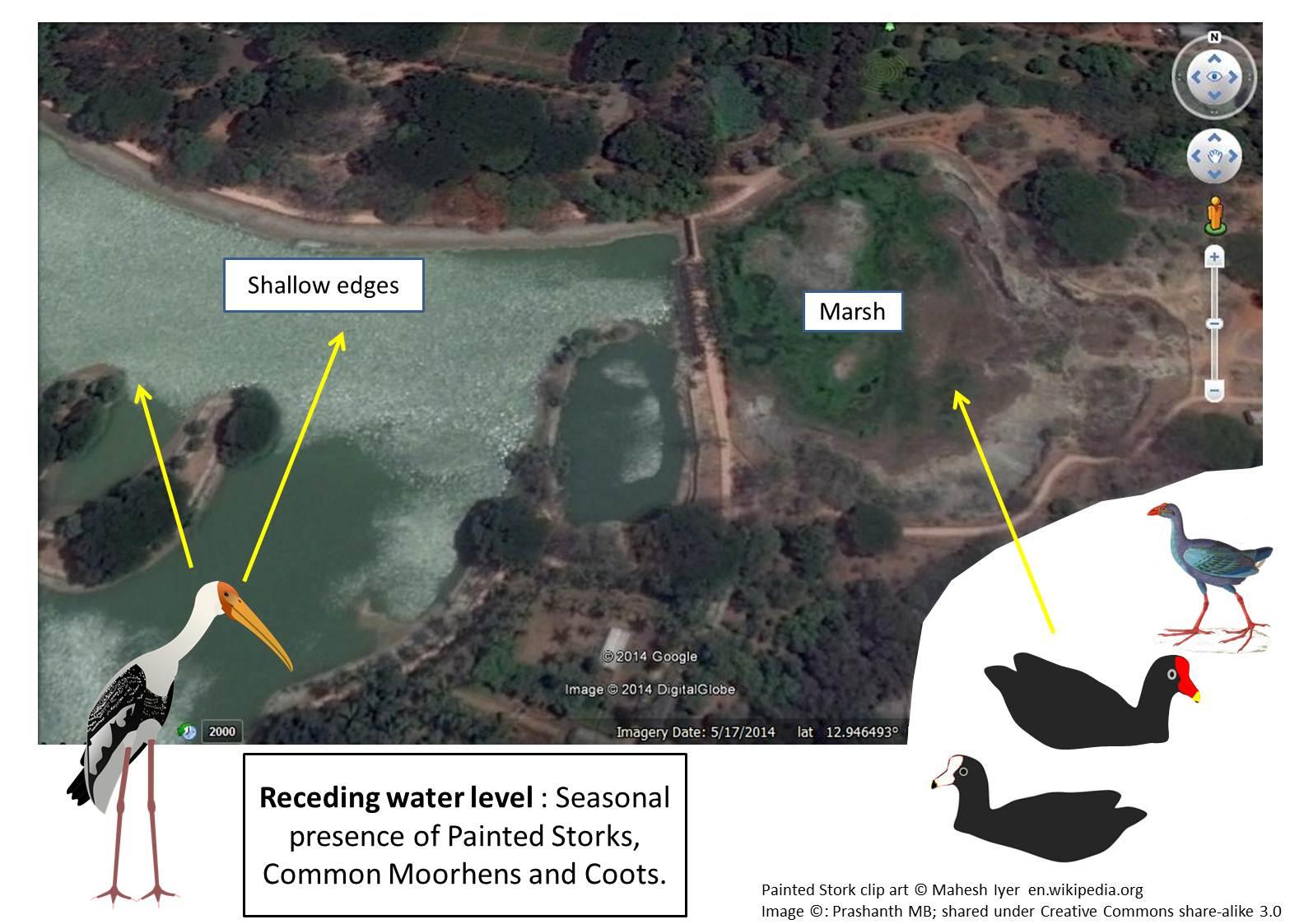
Fig 3 (left): Google earth image showing the main tank and the marsh on either sides of the bridge. Rails are predominantly seen in the marsh while Painted Storks have been seen feeding on the shallower edges in the main tank since June.
Status of waterbirds in Lalbagh
Since this set of observations span just one seasonal cycle, a concurrent and continuous cycle of observations with similar evidences of movements may confirm possible dispersion due to nesting. Invariably, this set of information collected as a result of monitoring activity on monthly bird watching outings still serves as a ready reckoner that has been absent for a while.
Limitations: The rainfall during the months of Sep-Oct 2014 have been in excess of normal rainfall and conditions in the wetland are bound to change during winter and summer. Alongside the counting of waterbirds, during the entire seasonal cycle, the garden birds have also been documented for each birdwatching session on all the months. Due to variations associated with detectability (that species may go undetected even when present), unless the same locations were monitored each time under strict definitions for surveys, it would be hard to present a similar status of the garden birds unlike the one for waterbirds. Also the path walked during each outing may deviate a wee bit and time spent at each point would vary drastically. In any case, the entire sample of birds recorded during each outing will be posted in suitable forums (bngbirds, e-bird, Indiabiodiversityportal).
Acknowledgements: This compilation has been solely possible due to the efforts of Kishan SB who was able to survey during most of the months. TS Srinivasa was grateful in helping Kishan while observing on a few outings. Anvitha Rao shared the report from November and she along with Purabhi Deshpande also helped Kishan to collect information on a few outings. The missing counts for April was sourced from Mike Prince’s report on ebird.org (subID=S17940080)
Bird clip arts (Little Cormorant, Great Cormorant, Painted stork, Black-crowned Night Heron) were sourced from en.wikipedia.org from the following author Mahesh Iyer, http://en.wikipedia.org/wiki/User:Mahesh_Iyer. All the above charts and images with clip arts are shared under – Creative Commons Share-alike 3.0 – Purple Moorhen clip art was sourced from –commons.wikimedia.org– shared under the public domain.
References:
Archives: bngbirds@yahoogroups.com. Nos following # indicate message numbers
Kishan SB #26110; # 26393; # 26888; # 27088; # 27258; # 27336; Prashanth MB # 14359; , # 14359; # 11914; # 12200; #26001.
Joseph George, 1994. Annotated Checklist of the Birds of Bangalore.Birdwatcher’s Field Club of Bangalore.
Krishna MB and Madhav Gadgil, 1993. Impact of boating on the birds of Lalbagh tank. A report submitted to the Department of Ecology and Environment, Government of Karnataka, by the Centre for Ecological Sciences, Indian Institute of Science, Bangalore.
Swamy, NR. (1990). Deteriorating Lalbagh. Newsletter for birdwatchers, NLBW 30(3+4):12
Text and content Copyright- Prashanth M Badarinath, Nov 2014. Shared under Creative Commons Share-alike CC 3.0














































